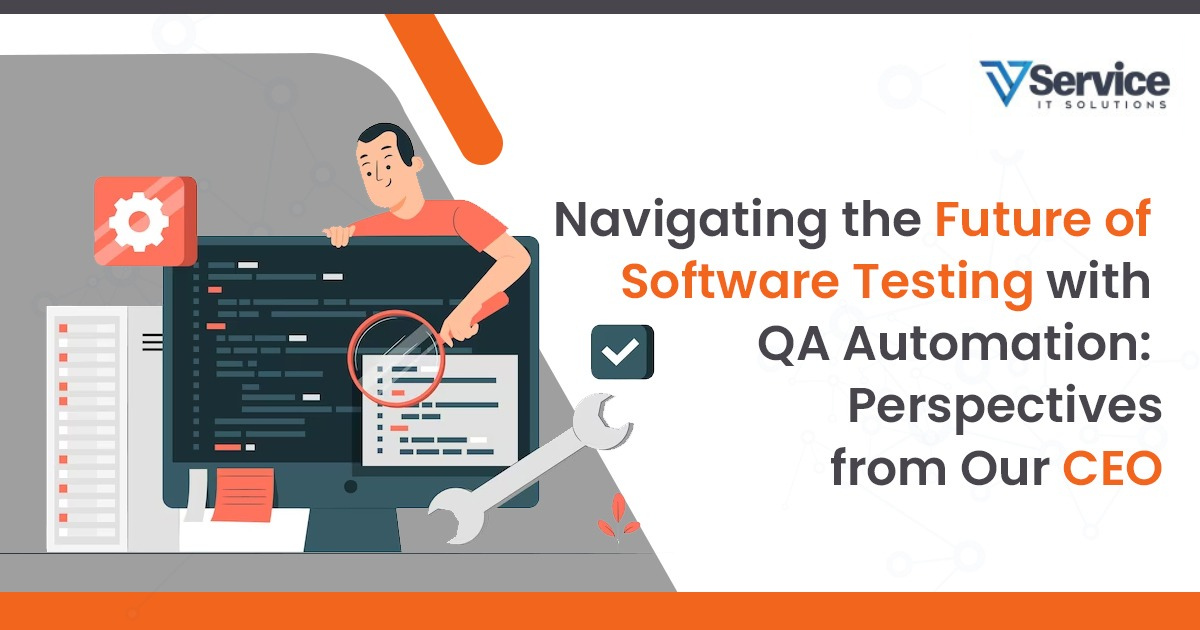Navigating the Future of Software Testing with QA Automation: Perspectives from Our CEO

As the CEO of an IT staffing company, we have to constantly keep an eye on the latest trends and developments in the industry. One trend that has been noticed as becoming increasingly trendsetting is the use of QA automation in software testing.
Automation has been around for a while now, but its use in software testing has really taken off in recent years. In the past, manual testing was considered to be quite normal. Testers would go through the application or software program, feature by feature, looking for bugs and issues arising. While this method can be effective, it is also time-consuming, labor-intensive, and prone to human error.
Software testing with QA automation
With the advent of QA automation, however, software testing has become much more flexible, efficient, and reliable altogether. Automated tests can be run much more quickly and accurately than manual tests, and they can be repeated easily, allowing for more comprehensive testing in a short period of time.
At our company, we have seen firsthand the benefits of using QA automation in our client’s testing processes. We have been able to increase their testing coverage, reduce their testing time, and catch more bugs and issues than they were able to with manual testing alone. This perhaps makes us a step ahead of the people in the crowd.
At Vservice IT Solutions, we ensure to screen the trend ourselves before we vouch for it to our clients. This provides adequate substance to our claim, thus ensuring better results and deliverability for our clients.
Of course, like any technology, QA automation is not without its challenges. Let us discuss some of those challenges below.
Challenges in QA automation for software testing
One of the biggest challenges that businesses face is keeping up with the rapid pace of change in the industry. New tools, technologies, and frameworks are constantly emerging, and it can be difficult to stay on top of all of them.
To address this challenge, we have made a commitment to continuously learn and develop the latest trends as per the requirement of our clients. Our testers are encouraged to attend industry events and conferences, take online courses, and participate in professional development programs. This helps us stay up-to-date with the latest tools and technologies, and ensures that our client’s testing processes remain effective and efficient with no room for error.
Another challenge that has surfaced is the need to balance automation with manual testing. While automation is incredibly powerful, there are still some testing tasks that are better suited to manual testing. To address this challenge, we have developed a hybrid testing approach that combines the best of both worlds. We believe that using automation for repetitive, routine testing tasks while reserving manual testing for more complex, exploratory testing tasks would be more beneficial.
Rather than allotting either human or machine, the sole task of testing, this way the results will be more enhanced. Our clients in the business also get the best of both fields without dealing with any complexities.
The observation drawn on the subject
One thing that has become clear to us as we have navigated the future of software testing with QA automation is that there is no one-size-fits-all solution. Every software development project is different, and each requires a unique testing approach.
To address this, we work closely with our clients to understand their specific needs and requirements. This helps us tailor our testing processes to their individual projects, and ensures that we are providing the most effective and efficient solutions possible.
As we look to the future of software testing with QA automation, we are excited about the possibilities that lie ahead.
We also see automation becoming more integrated with the software development process as a whole. In the past, testing was often seen as a separate, distinct phase of the development process. But as automation becomes more prevalent, we see testing becoming more integrated into the development process itself, with automated tests being run continuously throughout the development lifecycle.
Conclusion
To conclude, the future of software testing with QA automation is bright. As long as we stay committed to continuous learning and development, and remain flexible and adaptable in our approach, we believe that automation will continue to revolutionize the way we test software and ensure the highest quality products for our clients. We at Vservice IT Solutions believe it to be a new revolution in the field of Software testing. What about you. Share your meaningful thoughts with us.
Author :
Madan
Head of Sales and Business Development, responsible for ensuring optimal company performance and keeping track of client service level agreements. And this is simply my daily routine!
I enjoy planning and implementing effective maintenance to assure compliance with all disaster recovery plans while I am not working on my next project. I support technical employees in analysing and resolving difficulties in order to meet all objectives, designing and maintaining all IT processes using standardisation techniques, and maintaining all documentation for various tasks.
Latest Blogs
Get New Solution for your Problem
Still can’t find answers to your challenges. Get in touch with our experts
